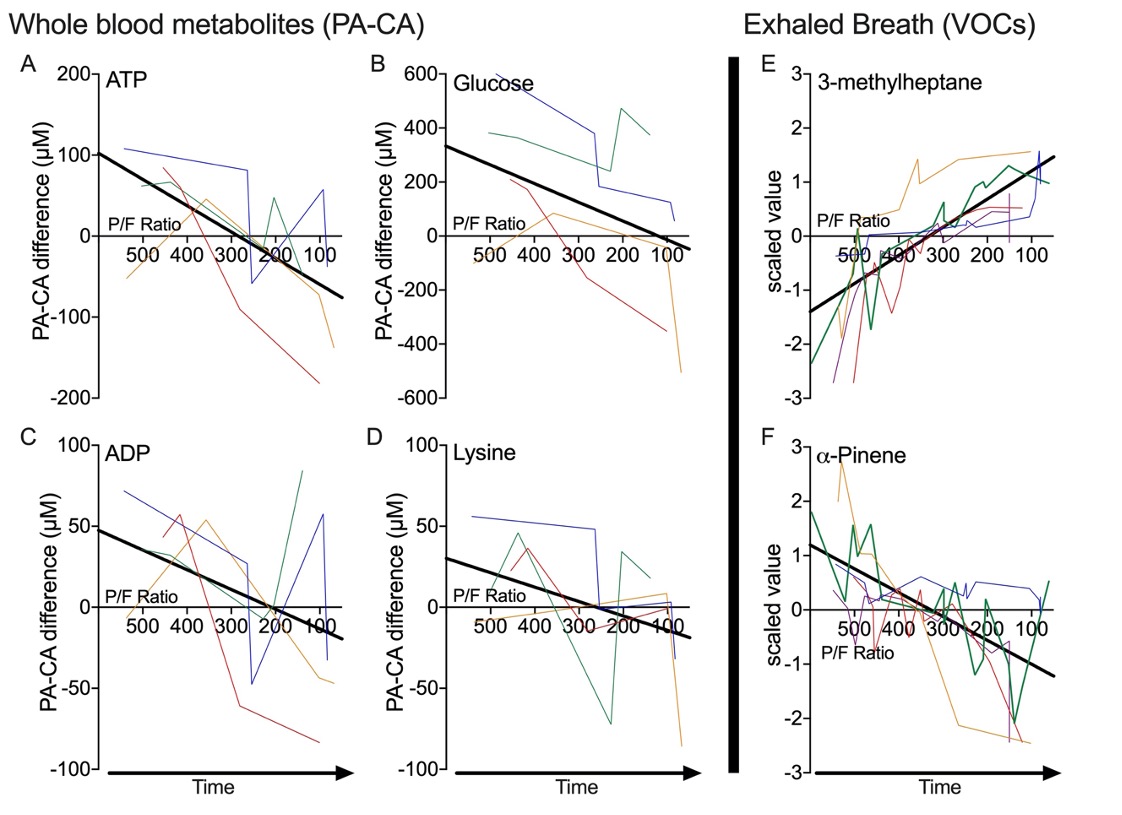Abstract
Understanding of lung-specific metabolic changes to ARDS development is limited due to the paucity of longitudinal studies and that the lung is difficult to repeatedly sample. We obtained a ?metabolic lung biopsy? by simultaneous acquisition of trans-pulmonary whole blood (WB) from the pulmonary (PA) and carotid (CA) arteries every 4h and hourly volatile organic compounds (VOCs) in exhaled breath from a swine model that develops both radiographic and histo-morphologic evidence of ARDS. WB was assayed by quantitative proton nuclear magnetic resonance spectroscopy and exhaled breath by gas chromatography. Data were analyzed by a mixed effect model with random intercept. P/F ratio was used as the fixed effect to determine the average slope for each metabolite. 37 WB metabolites and 55 named VOCs were detected from 4 of 5 and 5 of 5 swine, respectively. With declining P/F ratio, there was increased excretion/production (PA<CA) of key WB energy metabolites including (A) ATP (p=0.007), (B) glucose (p=0.03), (C) ADP (p=0.12) and (D) lysine (p=0.14). In exhaled breath, as ARDS develops, (E) 3-methylheptane (p<0.001), which may be a by-product of lipid peroxidation and (F) a-pinene (p<0.001), a terpene with anti-inflammatory activity, increased and decreased, respectively. These findings suggest that a ?metabolic lung biopsy? is feasible and could aid in informing lung-specific metabolic processes that participate in ARDS pathogenesis.
(A) ATP (p=0.007), (B) glucose (p=0.03), (C) ADP (p=0.12) and (D) lysine (p=0.14). In exhaled breath, as ARDS develops, (E) 3-methylheptane (p<0.001), which may be a by-product of lipid peroxidation and (F) a-pinene (p<0.001), a terpene with anti-inflammatory activity, increased and decreased, respectively. These findings suggest that a ?metabolic lung biopsy? is feasible and could aid in informing lung-specific metabolic processes that participate in ARDS pathogenesis.